- Home
- Mark Wayne McGinnis
Guardian Ship
Guardian Ship Read online
Guardian Ship
Mark Wayne McGinnis
Table of Contents
Prologue
Chapter 1
Chapter 2
Chapter 3
Chapter 4
Chapter 5
Chapter 6
Chapter 7
Chapter 8
Chapter 9
Chapter 10
Chapter 11
Chapter 12
Chapter 13
Chapter 14
Chapter 15
Chapter 16
Chapter 17
Chapter 18
Chapter 19
Chapter 20
Chapter 21
Chapter 22
Chapter 23
Chapter 24
Chapter 25
Chapter 26
Chapter 27
Chapter 28
Chapter 29
Chapter 30
Chapter 31
Chapter 32
Chapter 33
Chapter 34
Chapter 35
Chapter 36
Chapter 37
Chapter 38
Chapter 39
Chapter 40
Chapter 41
Chapter 42
Chapter 43
Chapter 44
Chapter 45
Chapter 46
Chapter 47
Chapter 48
Chapter 49
Chapter 50
Chapter 51
Chapter 52
Chapter 53
Chapter 54
Chapter 55
Chapter 56
Chapter 58
Chapter 59
Epilogue
Acknowledgments
Other Books by MWM
Copyright
Prologue
White steam billowed up into the frigid winter air from a nearby metal grate. The Manhattan street corner was already bustling with fast-walking, early-morning pedestrians, bundled up within heavy overcoats, necks wrapped within colorful scarves. Unlike his own species, which often walked about on all fours, these humans preferred to stand tall—erect. The alien observer, Hannig, sat and watched, transfixed by what he was seeing. Outside, mere feet away from where his small spacecraft hovered unseen, a human male stood, his bare knobby knees exposed. Moments before, the same bearded man—his hair wild, with equally wild eyes—had unceremoniously dropped his trousers, which were now bunched down around his ankles.
Glistening in the morning sun, a yellow stream of urine showered down onto another human’s head. The alien observer checked the prone man for signs of life. A rapid cascade of alien symbols—mostly diagnostic readouts—appeared just above one of the craft’s interior consoles. The observer pursed his bulbous lips. Oblivious to the yellow stream, the prone human lay sleeping. And he continued to sleep, even through this strange occurrence. A shallow golden lake was forming on the sidewalk, encircling the dozing man’s face.
Hannig, having recorded the situation from multiple angles to allow for a three-dimensional playback, logged the file and cued it up for interstellar transmission later in the day. He leaned back in his seat, letting out a measured breath. The truth was, Hannig was inwardly rooting for this odd, bipedal species to make the grade: to prove themselves worthy of outside interference. The data had proven them to be highly resourceful. But they had a dark side, too—unparalleled negativity, except for a few other species within the cosmos. Exhibiting such pettiness, such selfishness, such capacity for unbridled violence.
Startled, Hannig watched as an obese elderly woman, a frayed and soiled red blanket draped over her shoulders, pushed her junk-filled shopping cart right through the middle of his unseen vessel. Sour human body odor lingered for several moments even after she was gone—now lifting her cart up onto the sidewalk across the street.
The physics behind the phenomenon never ceased to amaze Hannig—even now, having experienced similar occurrences throughout this most recent deployment. For this mission he had been issued one of the more advanced spacecraft: a Temporal 5, also known as a Watcher Craft.
The physics behind the phenomenal spacecraft had been explained to Hannig by inventor, friend, and all-around techknologist, old Napht Prophon, some twenty years prior. Back when Hannig was but a young guardsman with the Core Worlds Eighth Exploratory fleet. Hannig considered himself something of a scientist in his own right. He easily grasped concepts that other observers, deployed to other planetary systems, probably would not—such as the vessel’s amazing ability to occupy dual quantum states simultaneously.
He remembered when Napht Prophon placed a long-fingered hand on his shoulder and said, “Any particle surrounding an atomic nucleus cannot occupy the same quantum space as another particle. It’s simple physics, Hannig. But it wasn’t so long ago our techknologist discovered that surrounding electrons could be forced into the wrong symmetry, captured by already-occupied quantum states. This violates the exclusion principle, and instantly makes matter behave, um . . . more or less ghost-like . . . whereby solid matter can move through solid matter. One quantum state, or realm, passing through another. A mere breath of an interchange between two parallel realities. And there is the added benefit that the vessel becomes invisible . . . or nearly invisible. But it is not a perfect system as of yet. The ship, while in this ‘veiled’ mode, will emanate minimal amounts of X-ray radiation. Fortunately, there are internal compensators that will alleviate any long-term adverse effects on organic matter.”
Hannig had fond memories of the old techknologist, though Prophon’s earlier assumptions had unfortunately been off. Exposure to high levels of X-ray radiation had, in the end, led to the demise of poor Napht, as well as to a good many other Observers who were deployed back then. Their internal ship compensator calculations had been incorrect, and resulted in insufficient protection to any of those deployed in the earlier ships. His subsequent death had led to a redesign of the system. But Hannig considered his friend’s miscalculations more of a great sacrifice than a mistake.
Hannig, now back at the ship’s forward control console, navigated the vessel down 34th Street, ten feet above the bumper-to-bumper jam of slower-moving yellow taxicabs. He found the nearly constant honking of vehicle horns a curious phenomenon. What purpose does that futile act possibly serve? He made a right turn onto 5th Avenue and slowed to a stop. Cascading meta-info indicated the attractive structure off to his right was something called Marble Collegiate Church. He ascended higher, where the building’s tall spires reached far into the air—as if spearheads to ward off interstellar intruders such as himself.
But now, from higher up, the irritating street noises below had grown faint, less distracting. Tired, what he knew humans would refer to as having just worked a graveyard shift, Hannig felt hovering above here would be as good a place as any to rest. Yes, he would sleep now—for tonight he again would be observing the humans up close, making more of his fateful determinations.
Chapter 1
Dominic Moretti
Without looking up, I texted a quick reply back to Gordo. Immersed in my phone, I was pretty much oblivious to anyone else sharing the same sidewalk. A fast-moving shape leaped out of my way and exclaimed, “Hey! Watch it, fucker!”
I ignored him, passing below a blown-out streetlight. My XXL forest-green sweatshirt must’ve looked almost black in the night. I slowed, pulling up my oversized hood over my oversized head.
Gordo: Come on, Dommy. He wants to meet later tonight.
Me: Tough shit.
Gordo: 10 minutes. You can’t give him 10?
Me: I have an early appointment tomorrow morning.
It was true. My daytime job as a real-estate appraiser was mostly in the worst fucking neighborhoods in
the city. Places no sane person would willingly venture into: Hunt’s Point, Mott Haven, Tremont, and Fordham.
Gordo: Never a good idea to dis the boss . . .
I let out a frustrated breath and glanced up into the starry night. Breath vapors rose into the cold darkness. Shit! Gordo was right. I knew it. The boss he was referring to was Tito Caputo, and he very much was The Man. The Cosa Nostra was still very much alive and well in these parts.
On autopilot, I veered out of the way of an approaching couple, their arms slung around each other’s shoulders. A sharp pang gripped my heart and I tried not to think of my Anna. I wondered what she was doing at that moment. Maybe reading a bedtime story to Valentina . . . my little Val.
Me: Fine. I’ll be there.
Gordo: Smart move.
I made a right at the Mulberry Street intersection then trotted across the street between several jammed-together cars awaiting a green light. Mulberry cleaved right down the middle of Little Italy before ending at Bleecker Street, at the south end of NoHo. Chinatown was off to the west. My Nonno used to tell me stories about the Mott Street and Elizabeth Street crews working this area. How the gangs owned the place. If he were still alive, he’d find many things looking a whole lot different, though some hadn’t changed all that much.
I grew up here, in New York’s Little Italy, or at least that’s what they used to call it. Not sure if that’s true anymore, with all the influx of young hipster gentrification crap going on these days. So yeah, I’m a fourth-generation Italian—my family originally stems from somewhere near Naples, back in the home country.
I’ve only been back in the States for less than a year, after serving a four-year stint in the Marine Corps. I was part of an elite group in Afghanistan (and sometimes in Pakistan) called Force Marine Recon. In general, Recon is tasked with an assortment of land and amphibious reconnaissance missions, intelligence collecting, and surveillance. Small unit raids—fast in-and-out stuff—were the norm. You could say Recon works within that gray area between special operations forces and conventional military forces. A lot of the time our operations were off the books—really dark engagements. I try not to think too much about some of the things I’ve done, although I’m mostly proud of my service to flag and country. Some would say I left the Marines a hero, though I’d say I left the corps a little broken. Needless to say, transitioning back into civilian life has been difficult. A day doesn’t go by when I don’t think about one mission in particular . . .
1300 hours — Afghanistan-Pakistan Border Village
. . . the bullet made an unmistakable sound, a kind of snap and crack, as it flew supersonic, mere inches past my left ear. It’s not a sound I like. In fact, I hate it—sometimes I still hear it in my dreams at night. I held my weapon (an M4A1, which is the fully automatic variant of the M4) high and tight, close to my right cheek. I moved around fast but didn’t dare look away from my low-profile optical scope. We were clearing an outbuilding, though I’d call it more like a rambling grouping of shit-shacks, one room at a time, on the outskirts of a medium-sized village.
To my right, Emerson said, “Clear!” On my left, Manford echoed, “Clear!” I did the same, repeating the call. We all wore TCAPs—Tactical Communications and Protective System headsets, which provided the audio for our joint team comms as well as managing the irregular sounds around us. The devices amplified soft noises to a degree, but more importantly, loud noises, such as a rifle’s piercing report, were diminished so one’s eardrums weren’t irreversibly blown.
This was a fairly large operation, one that had multiple elements to it. We hadn’t been told the exact geographical details, but I suspected we were in fucking Pakistan, unaccompanied. I also suspected that we probably shouldn’t be here. A special operation, our mission was to rout out a specific terrorist element in the mountains. Supposedly, the location was a valley within Afghanistan, close to the Pakistani border. But that’s where things got a little murky. Hey, it’s not like there’s a map line that’s drawn in the sand, highlighting the split between the countries.
Our particular Marine Special Operations Team (MSOT) had been tasked with securing access to this valley’s entrance point, where the broader stealth operation was to take place. We were tasked with securing structures where crazed Hajjis could be hiding out—ready to blow away any one of us, possibly all of us at once.
As we made our way through the outbuilding, we still didn’t know for sure if the structures we were seeing were even the right buildings. Again, were we even in the right fucking country? Our ride here was in an Osprey Aircraft—one of those big birds that provide vertical takeoffs and landings, but that can also travel fast in the air when switched into airplane mode. Word was, we’d had navigation problems en route, something about veering off course as detected by the lone Lockheed’s Stalker XE—a fixed-wing, high-altitude, MARSOC tactical support drone. Only when the Osprey landed, dropping us then taking back off, were we able to make an attempt to double-check things. Rocky and deep, the valley was affecting our comms, and the GPS readings were all over the place. Our CO, Captain Carl Blatt, made the decision that we should continue on anyway. There was the bigger picture to consider—we, along with most of the allied military forces currently in the country, were desperately looking for one Abdul Javed Jarwar. A renowned terrorist leader, he was the mastermind behind a slew of barbaric attacks in Afghanistan and, more recently, in Western Europe. His unique calling card: coordinated bombings that overwhelmed a city’s resources and emergency response teams. His preferred targets were schools, museums, day-care centers—locations sure to have children, lots of children, present. Abdul Javed Jarwar was well aware of the emotional devastation he’d be reaping upon the townships and neighborhoods he marked for terror—that was his goal.
Suddenly, word came across our comms: There’d been a positive sighting of Jarwar, seen riding shotgun in a pickup truck that had entered some kind of compound up ahead. We were within a forward stronghold when Captain Blatt made the decision. “Move out . . . we’re taking that facility!”
Our team consisted of twelve Marines and two corpsmen. In this case, these two were Special Amphibious Reconnaissance Corpsmen, also known as SARC. Aside from Captain Blatt, there was our Team Chief—Master Sergeant Emerson; our Comms Specialist—Manford; a Staff Sergeant; and several Tactical Operators, including myself. There was also a dedicated sniper, Danny Godden, plus a handful of others. I’m pretty sure all Special Ops teams think they are the best. But after years of working with these guys, I honestly couldn’t imagine a better or more finely tuned fighting force anywhere.
We sent a few Marines off on their own, including Godden, as an overwatch team to survey the surrounding higher ground. The rest of us continued on ahead to recon the facility. This stronghold was a walled-in compound with only one way in: a dark red wooden door huge enough to drive a sixteen-wheeler through. The surrounding fifteen-foot ramparts were topped with razor wire. We spotted a good many turban-covered heads peeping over the wall at various posts—the thick coverage would make our breach assault that much harder.
Godden took up a position on a five-story building four blocks away. As far as I knew, he rarely, if ever, missed his target. At this short distance, he could handle this op in his sleep. Once he was in firing position, sighting through his long-barreled M110 SASS rifle, and given orders to proceed, we watched as Godden methodically—one by one—took out each of the wall combatants. Seemingly unrelenting, the loud rifle reports synchronized to one plume of pink mist spraying into the air after another. As the final sniper shot sounded, other Hajjis, hidden behind surrounding village structures, began firing at us in earnest. Almost immediately, I was hit in the chest, undoubtedly a round from an AK-47.
A Marine’s protective vest is an amazing asset. The IBA system is comprised of an Outer Tactical Vest and two Small Arms Protective Insert ballistic plates. Sure, I certainly felt the round strike me, a hard jolt in the clavicle, but it wasn’t nearly eno
ugh to put me on my ass. I’m a big man. A human tank, some have called me. I returned fire.
The subsequent firefight that ensued with the Hajjis continued for almost three hours. Only then did we bring out the big gun: a light, anti-tank weapon—the AT4, an 84-mm, unguided, portable, single-shot, recoilless, smoothbore inflictor of death and destruction. Built in Sweden by Saab Bofors Dynamics, the thing is a monster-killer. The fiery explosion of its shot shook the ground and made quick work of the fortification’s door.
We charged the entrance, staying low, while Godden provided cover from above. Once inside, our Ops team got to work. We cleared the four-story structure room by room. Pockets of firefights ensued, and we lost two good men, Danny and Jesus. Then a third man went down standing right next to me—Corporal Lance Weaver. I yelled out, “Doc!”—the affectionate moniker Marines give their medic Corpsman. But Weaver had taken a hit to the left temple; he was dead before hitting the ground.
Thirteen prisoners, in all, were rounded up and subdued. The overwatch team then came in and consolidated themselves on the compound’s rooftop. Captain Blatt used facial recognition tech to I.D. each of the captured Hajji. Third from the last was a tall, dark-skinned man. He wore the same dingy-white, billowy pants as the others, and a chador to cover his head. He was generally nondescript. But the facial I.D. came back positive for Abdul Javed Jarwar. We didn’t even try to hide our excitement or our disgust. Our team had done what no other team had been able to accomplish after two years of trying.
Comms were still spotty. It must have been the rocky, narrow valley we were in. But we confirmed two Ospreys were already en route. Up top, we had our dead and injured—those who had been lined up in order to quickly get them airlifted out. And we had our restrained prisoners up there too. Waiting with the CO on the compound’s top floor, I rummaged around, leafing through some papers lying on a table. I found an old foldup map, with markings and circles on it, bright red highlighting what seemed to be several key locations. I recognized the area. It was right where we were standing—here in this same village.

 The Hidden Ship
The Hidden Ship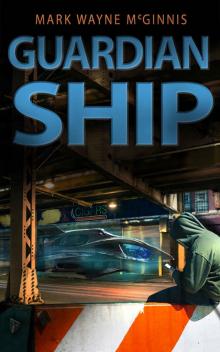 Guardian Ship
Guardian Ship Cloudwalkers
Cloudwalkers Mad Powers (Tapped In)
Mad Powers (Tapped In) Ship Wrecked
Ship Wrecked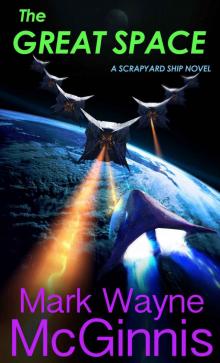 The Great Space (Scrapyard Ship Book 6)
The Great Space (Scrapyard Ship Book 6) Ricket (Star Watch Book 2)
Ricket (Star Watch Book 2)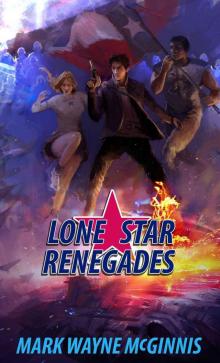 Lone Star Renegades
Lone Star Renegades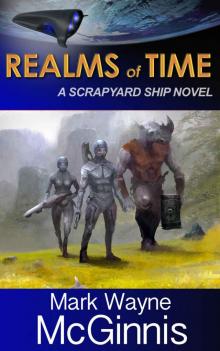 Realms of Time (Scrapyard Ship)
Realms of Time (Scrapyard Ship) Glory for Sea and Space (Star Watch Book 4)
Glory for Sea and Space (Star Watch Book 4) Scrapyard Ship 3 Space Vengeance
Scrapyard Ship 3 Space Vengeance Boy Gone
Boy Gone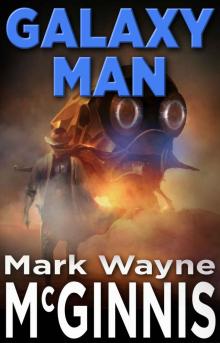 Galaxy Man
Galaxy Man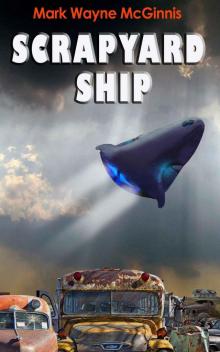 Scrapyard Ship
Scrapyard Ship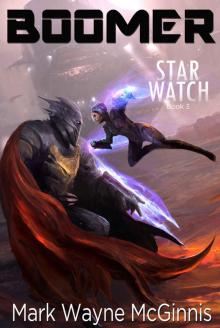 Boomer (Star Watch Book 3)
Boomer (Star Watch Book 3)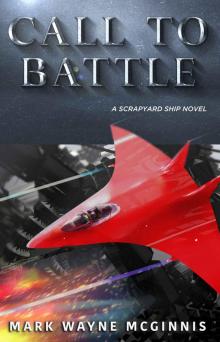 Scrapyard Ship 7: Call to Battle
Scrapyard Ship 7: Call to Battle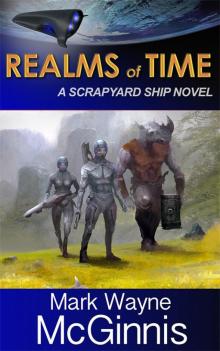 Scrapyard Ship 4 Realms of Time
Scrapyard Ship 4 Realms of Time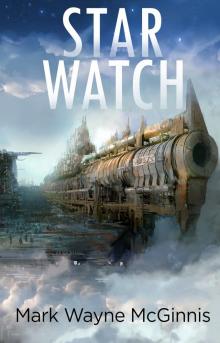 Star Watch
Star Watch The Simpleton QUEST
The Simpleton QUEST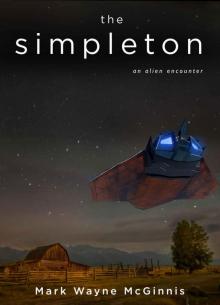 The Simpleton: An Alien Encounter
The Simpleton: An Alien Encounter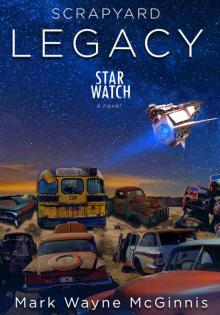 Scrapyard LEGACY (Star Watch Book 6)
Scrapyard LEGACY (Star Watch Book 6) Ship Wrecked: Stranded on an alien world
Ship Wrecked: Stranded on an alien world